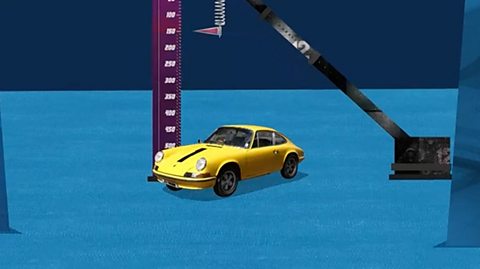Prescribed practical P8: The resistance of a metallic conductor
A guide to carrying out a practical to investigate resistance
What is the purpose of prescribed practical P8?
To investigate experimentally how the resistance of a metallic conductor at constant temperature depends on length and obtain sufficient values to plot a graph of resistance (y-axis) and length (x-axis).
What are the main variables in this practical?
The main variables in a science experiment are the independent variable, the dependent variable and the control variables.
The independent variable is what we change or control in the experiment.
The dependent variable is what we are testing and will be measured in the experiment.
The control variables are what we keep the same during the experiment to make sure it’s a fair test.
In this experiment the:
Independent variable is the length of wire.
Dependent variable is the resistance of the wire.
Control variables are the material, the cross section area and the temperature of the wire, and these are kept the same by not changing the wire during the experiment, by keeping the current small and by opening the switching between readings.
Remember - these variables are controlled (or kept the same) because to make it a fair test, only 1 variable can be changed, which in this case is the length of wire.
What is the equation used for calculating resistance?
Resistance R = \(\frac{voltage~V}{current~I}\)
What is the prediction for this practical?
As the length of wire increases, the resistance will increase.
What is the justification for this prediction?
The greater the length of wire the greater the number of collisions between the free electronsNegatively charged sub-atomic particles that can move through the structure of a substance, usually a metal or graphite. A material with many free electrons is a good conductor. and metal ionElectrically charged particle, formed when an atom gains or loses electrons..
This will result in greater resistance.
| Hazard | Consequence | Control measures |
|---|---|---|
| Water | Electric shock | Do not set up the experiment near taps, sinks etc. |
| Wire gets hot | Minor burns | Do not handle the wire. Switch off between readings. |
What apparatus is needed for this practical?
1m length of constantan wire, a metre rule, a low voltage power pack, a voltmeter, an ammeter, connecting leads, a switch, 2 crocodile clips, Sellotape.
How to carry out prescribed practical P8?
- Set up the circuit, as shown above. Attach one of the crocodile clips at the 0 cm mark and the other at the 20 cm mark so that the length of wire the current flows through is 20 cm. Record this length in a suitable table
- Adjust the power pack until the current on the Ammeter is 0.4 A. Record the current in the table
- Read the corresponding value of voltage across the wire on the voltmeter and record in the table
- Switch the switch off to prevent the temperature of the wire rising
- Switch on again and repeat the reading of voltage. Record in the table. Switch off and calculate the average voltage
- Calculate the resistance of this length of wire and record in the table
- Switch on again. Ensure that the current is still 0.4 A and repeat current and voltage reading for lengths of 40 cm, 50 cm, 60 cm, 80 cm and 100 cm
- Calculate the resistance for each length, remembering to switch off between each reading
Error
The temperature of the wire must be kept constant.
Whenever a current flows through a conductor there is a heating effect.
Electrical energy is converted to heat energy.
To ensure the temperature of the wire does not increase, switch off between readings and keep the current as low as possible.
Results
| Length l / cm | Current I / A | Voltage V / V | Voltage V / V | Voltage V / V | Resistance R / Ω |
|---|---|---|---|---|---|
| Reading 1 | Reading 2 | Average voltage | |||
| 0.00 | |||||
| 0.10 | |||||
| 0.20 | |||||
| 0.30 | |||||
| 0.40 | |||||
| 0.50 | |||||
| 0.60 | |||||
| 0.70 |
Graph
Plot a graph of resistance, R, in Ω on the y-axis against length, l, in cm on the x-axis. Draw the line of best fit.
Conclusion
We can see from the graph that as the length of the wire, l, increases, the resistance, R, also increases.
This agrees with our prediction.
In fact, since the line of best fit is a straight line through the origin, we can be even more precise.
We can say that, for a metal wire at constant temperature, the resistance is directly proportionalWhen one variable is zero so is the other. As one variable increases the other does at the same rate. When 𝒚 is plotted against 𝒙 this produces a straight-line graph through the origin. to the length of the wire.
If you double the length of the wire you double its resistance.
Variable Resistors
Variable resistors can be used to control the current that is flowing in a circuit.
They do this by changing the length of some resistance wire in a circuit.
The circuit diagram below shows a variable resistor being used to control the current through a bulb.
One connecting wire is attached to the bottom left terminal and the other to the upper right terminal.
As the sliding contact on the top is moved it changes the length of resistance wire in the circuit.
Increasing the length of wire decreases the current and vice-versa.
Longer resistance wire means more electron-ion collisions hence greater resistance and reduced current.
If connections are made between the two lower terminals it will act as a fixed resistor.
Below is the electrical symbol for a variable resistor:
More on Unit 3 (a): Prescribed practicals
Find out more by working through a topic
- count2 of 9
